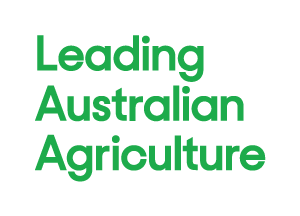2030 roadmap | 2022 Annual report card
Measuring our progress towards $100 billion
Each year, the National Farmers’ Federation releases its Report Card – summarising progress by industry and governments towards the aspirations of our 2030 Roadmap.
2030 roadmap | 2022 Annual report card
Each year, the National Farmers’ Federation releases its Report Card – summarising progress by industry and governments towards the aspirations of our 2030 Roadmap.
The past year has once again been defined by astounding volatility: in our climate, geopolitics, and markets.
Farmers have experienced extraordinary rainfall in many parts of the country, gifting us a promising season only to face the heartbreak of damaging rain and floods.
2022 saw a new party form government in Canberra for only the eighth time since the Second World War, bringing with it profound policy changes for the farm sector.
Globally, conflict in Ukraine has sent markets into turmoil, with prices of both inputs and commodities spiralling. This has caused an alarming jump in the number of people here and abroad now facing acute hunger.
All the while, the long shadow of COVID has continued to plague supply chains – causing business disruptions and fuelling rampant inflation.
Through all of this uncertainty, farmers have done what they do best, with another strong financial result forecast for the sector.
What’s more critical now than ever, is that farmers are supported through this volatility with policies that address our most pressing challenges: issues like labour shortages; biosecurity; and transport infrastructure, to name a few.
At the National Farmers’ Federation, we remain committed to our target of becoming Australia’s next $100 billion industry. That aspiration remains very much within reach, and we thank everyone in government and industry for their continued commitment to that vision.

Fiona Simson
President
National Farmers’ Federation
*Note the following ABARES data do not yet reflect the full impact of flood events
Select a pillar to jump to Report Card findings, or simply scroll down.

1.1 The agricultural value chain has deep engagement with its customers, based on trust and transparency.
Agriculture is ranked Australia’s most trusted industry.
1.2 Our value chain provides a competitive connection to global markets and delivers clear market signals to guide paddock-to-plate investment.
Australia’s freight cost per tonne-kilometre is competitive with major agricultural exporting nations.
1.3 Australia has world-leading market access, and the capacity to maximise the economic benefits.
A 50% reduction in agriculture exports experiencing non-tariff barriers each year. An average tariff faced by agricultural exports of 5%.

2.1 Farmers continue to embrace sustainable farming methods as part of a coordinated national framework that drives productivity and profitability, while recognising and rewarding environmental stewardship.
The net benefit for ecosystem services is equal to 5% of farm revenue.
2.2 Australian agriculture has cemented a competitive advantage and productivity gains by embracing a carbon neutral approach.
Australian agriculture is trending towards carbon neutrality by 2030.
2.3 Smart water policy has improved the health of our waterways, made our farms more productive, and made our regional communities more resilient.
A 20% increase in water use efficiency for irrigated agriculture by 2030.
2.4 We have stemmed the loss of productive farmland, improved the health of our landscapes, and brokered lasting co-existence arrangements with other landholders.
Maintain Australia’s total farmed area at 2018 levels.
2.5 Australia has halved food waste, and significantly reduced the number of Australians facing food insecurity – thanks in part to a proactive partnership with the agricultural value chain.
Halve food waste by 2030.

3.1 Public and private R&D efforts work seamlessly to translate world-class research into tools and services which give Australian agriculture a competitive edge
Australia becomes a Top 20 nation for innovation efficiency.
3.2 The agricultural value chain is highly digitised, with the benefits of new technology shared fairly among participants.
Every Australian farm has access to infrastructure and skills to connect to the Internet of Things.
3.3 The agricultural value chain has reduced its reliance on fossil fuels, in favour of biofuels and renewable sources of electricity that are affordable and reliable.
Australia’s farm energy sources are 50% renewable by 2030.

4.1 There is a clear career pathway to attract workers and develop their skills, with tailored streams for new entrants through to seasoned professionals.
Double the number of tertiary and vocational agriculture graduates by 2030.
4.2 We have robust and sustainable mechanisms to access labour from Australia and around the world.
Increase the available work force by 25%.
4.3 A career in Australian agriculture is an accessible aspiration for all.
Achieve gender parity in the agricultural workforce and double the number of women in management roles.
4.4 We live in strong regional communities that are home to: world class education and health facilities; culture and entertainment; and a diverse economy.
A mean score of 5 for every Physical Capital sub-measure in the Regional Wellbeing Survey.
4.5 Australian farms have embraced a culture of safety, dramatically reducing workplace injuries and eliminating on-farm fatalities. A coordinated effort has improved the physical and mental health of industry participants.
Zero farm fatalities. Close the gap between the psychological wellbeing of farmers and the broader community

5.1 Farm businesses have embraced new governance models -helping them better plan for the future, manage risk, and increase profit.
90% of family farms have documented business plans, including succession plans.
5.2 Investors are lining up to inject capital into Australia’s agricultural businesses, based on demonstrated returns and a supportive policy environment.
Year on year increase in equity investment in Australian farm businesses.
5.3 Innovative tools to reduce the inherent risks of farming are used by every Australian farm business – supported by consistent and well administered government risk management policies.
90% of Australia’s farmers employing multiple financial tools to manage risk.

Copyright © 2024 · Created by the National Farmers' Federation